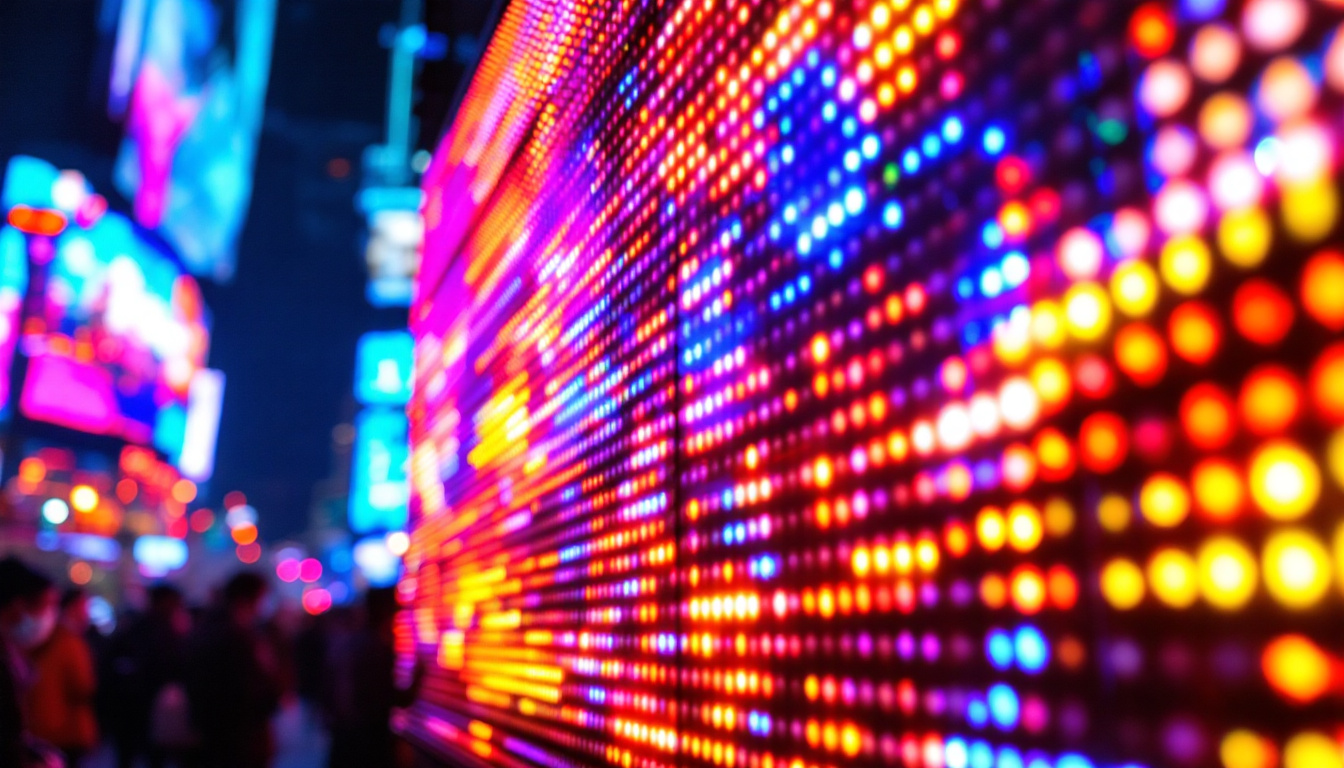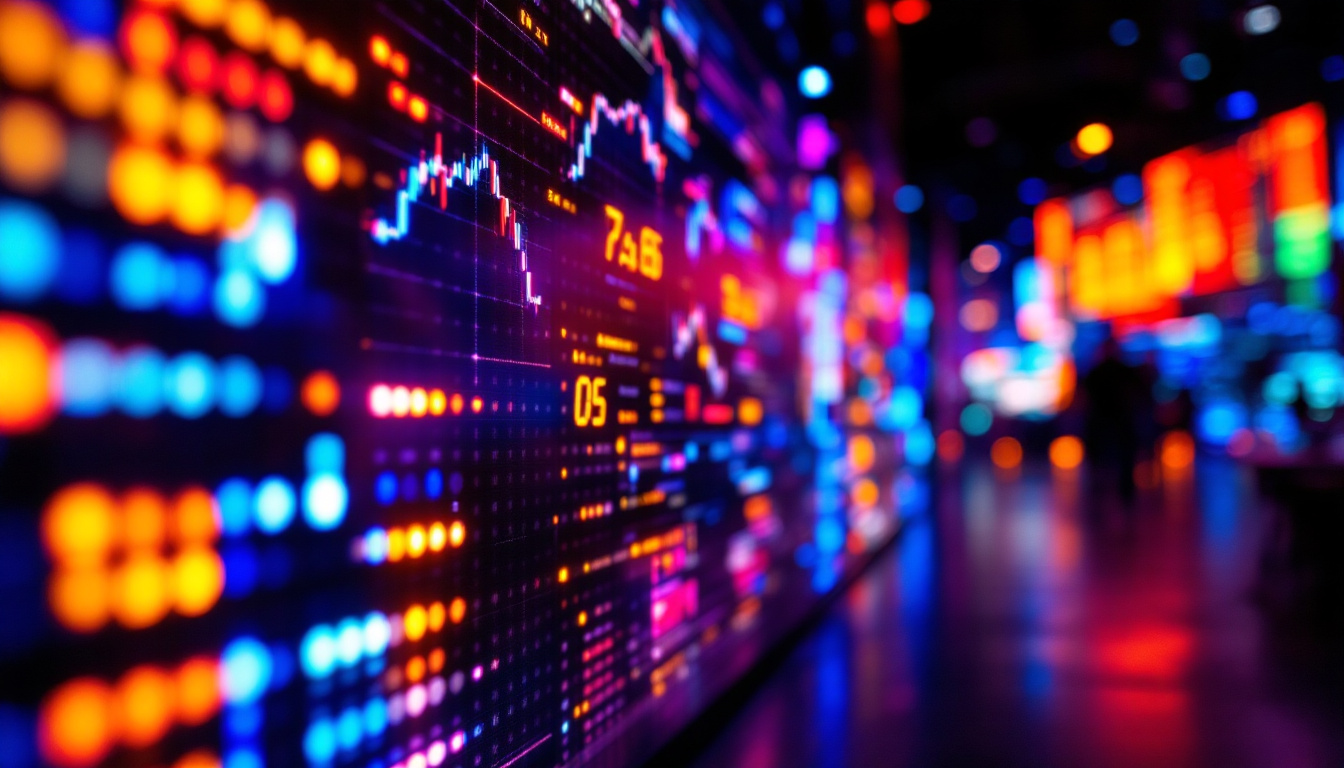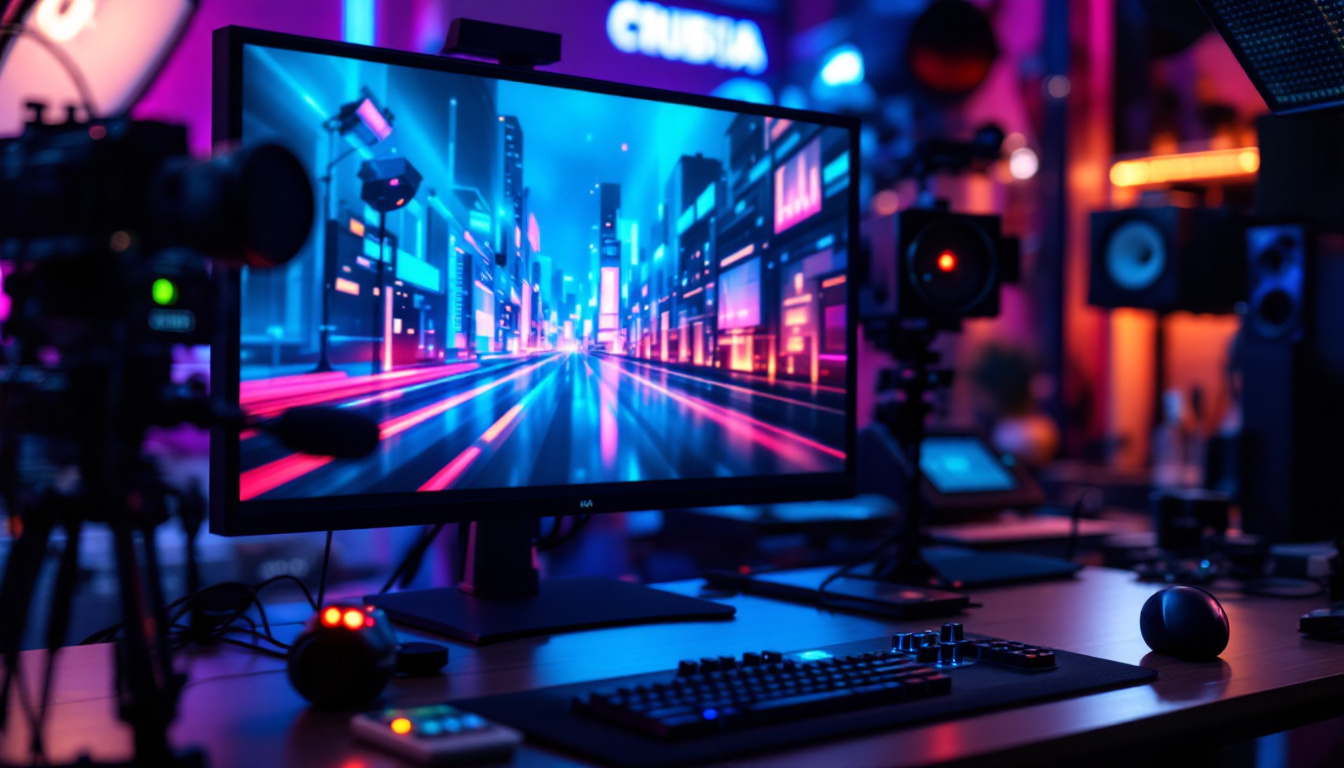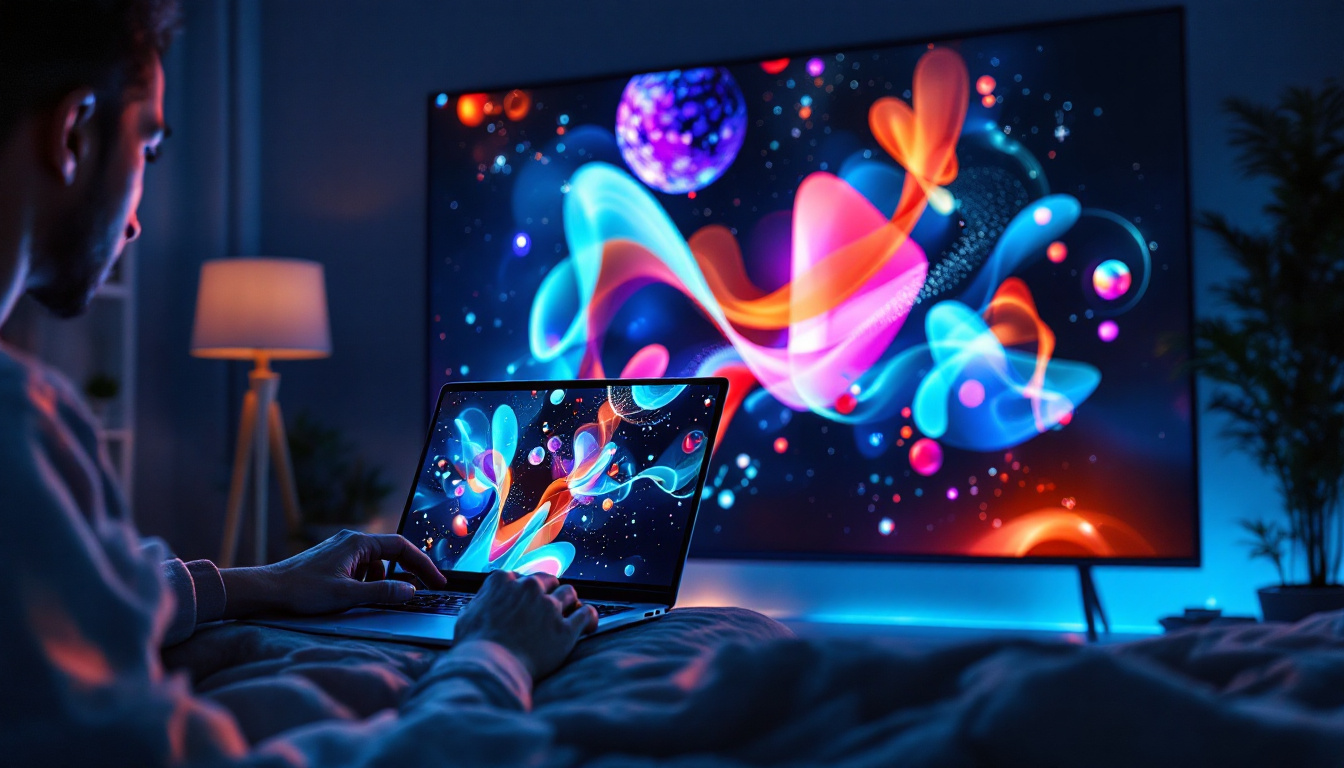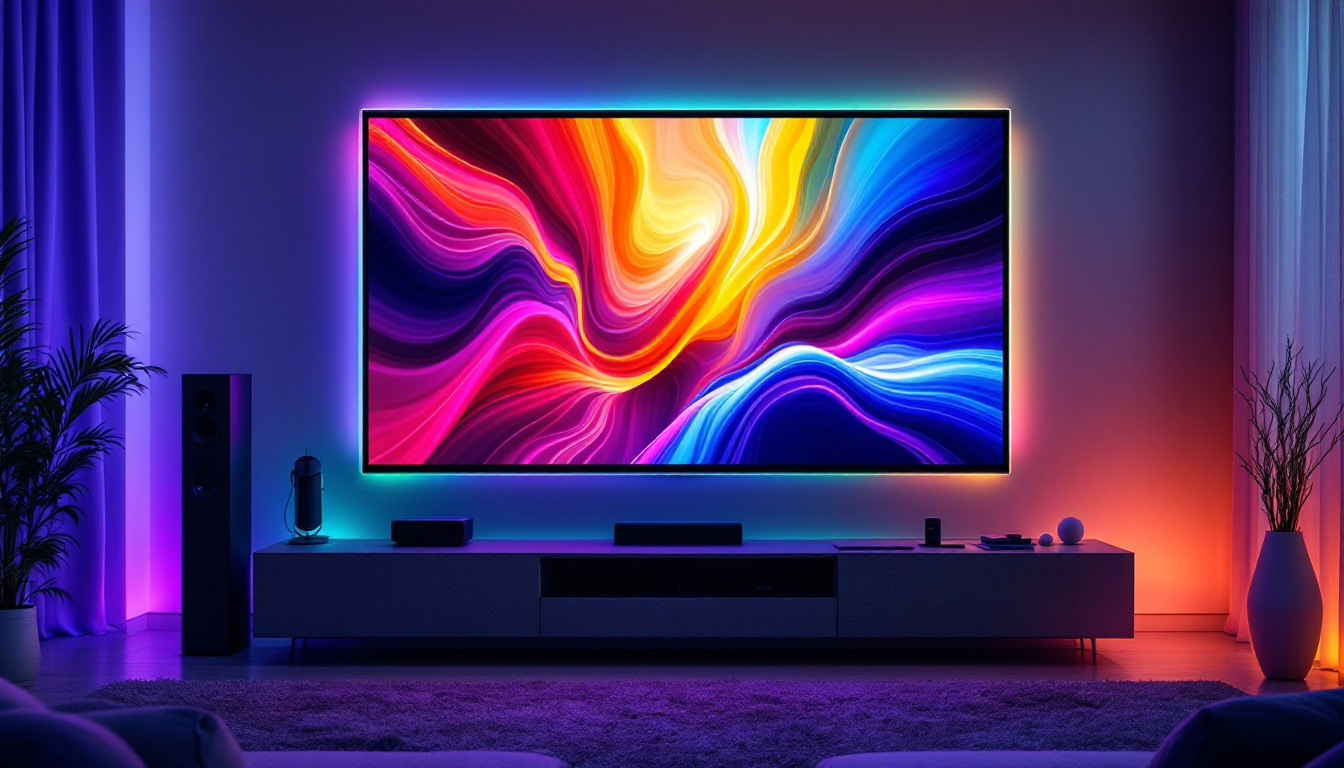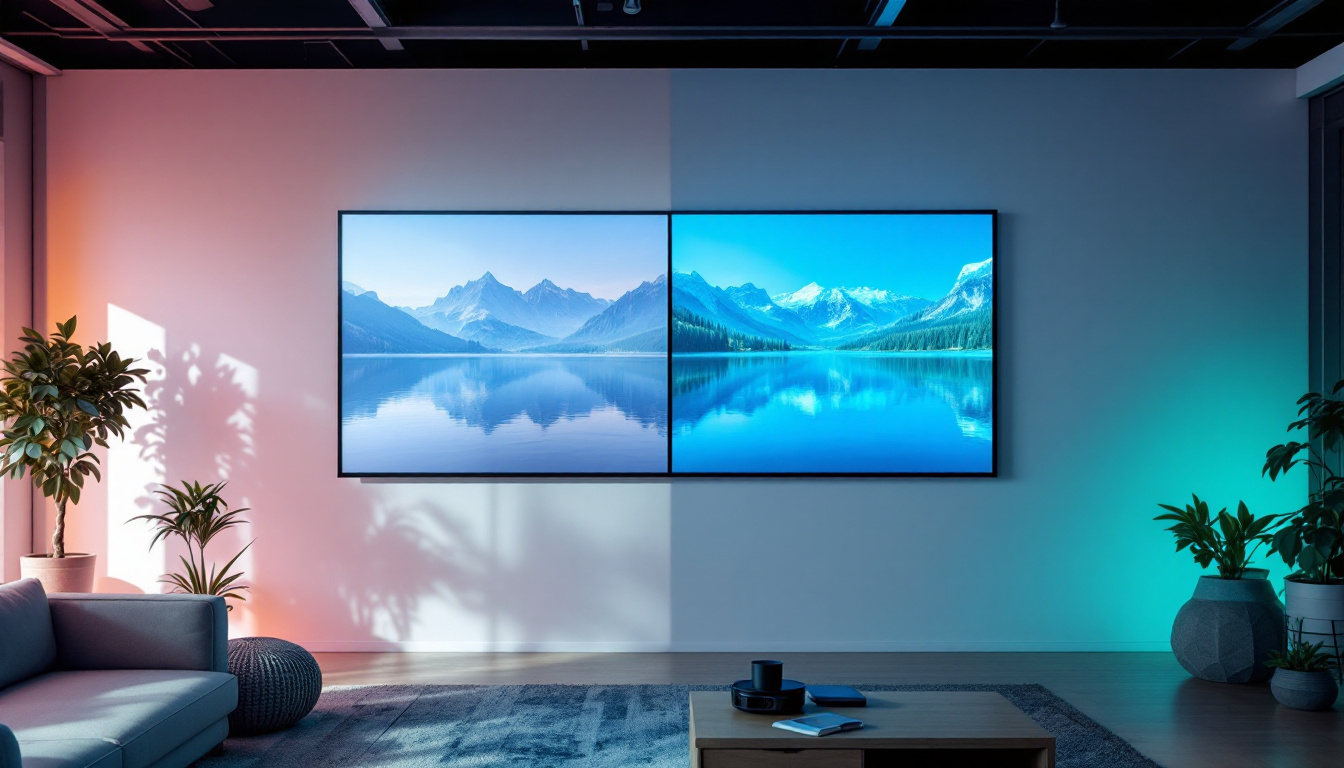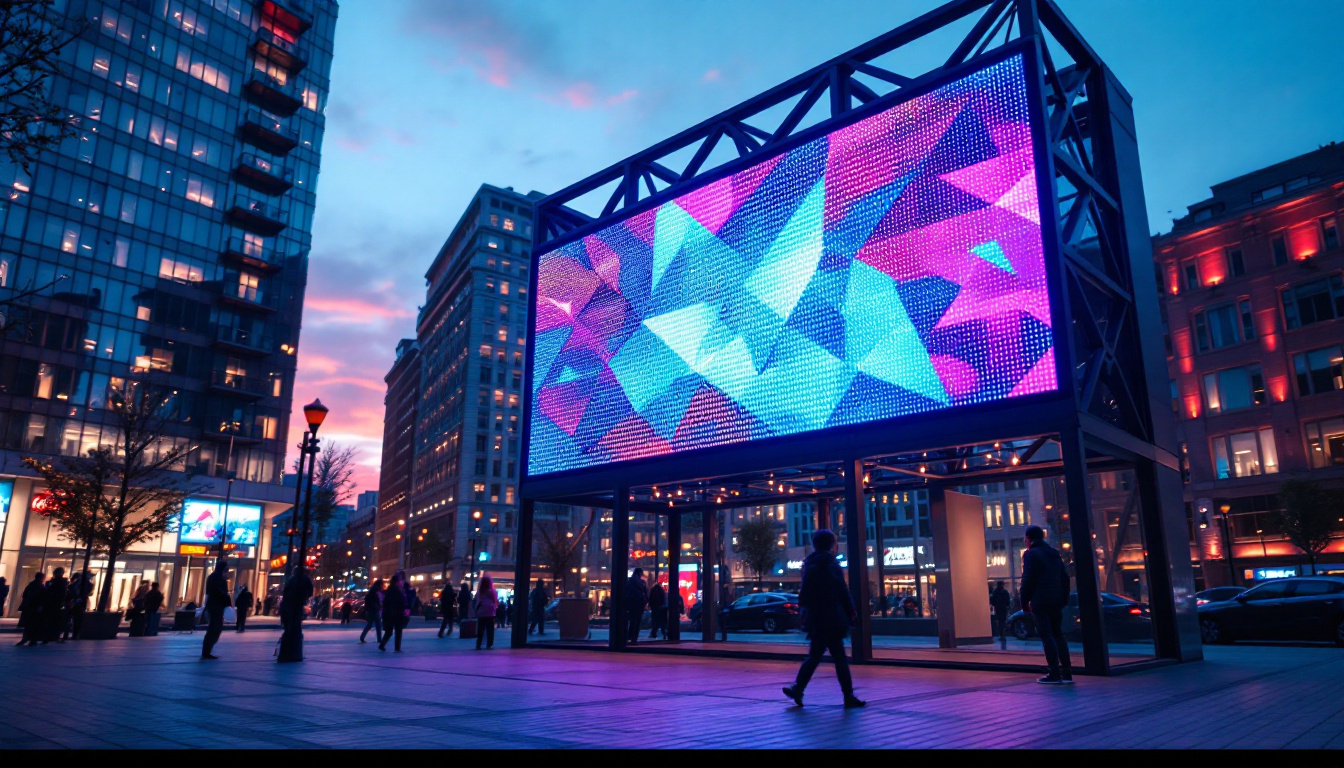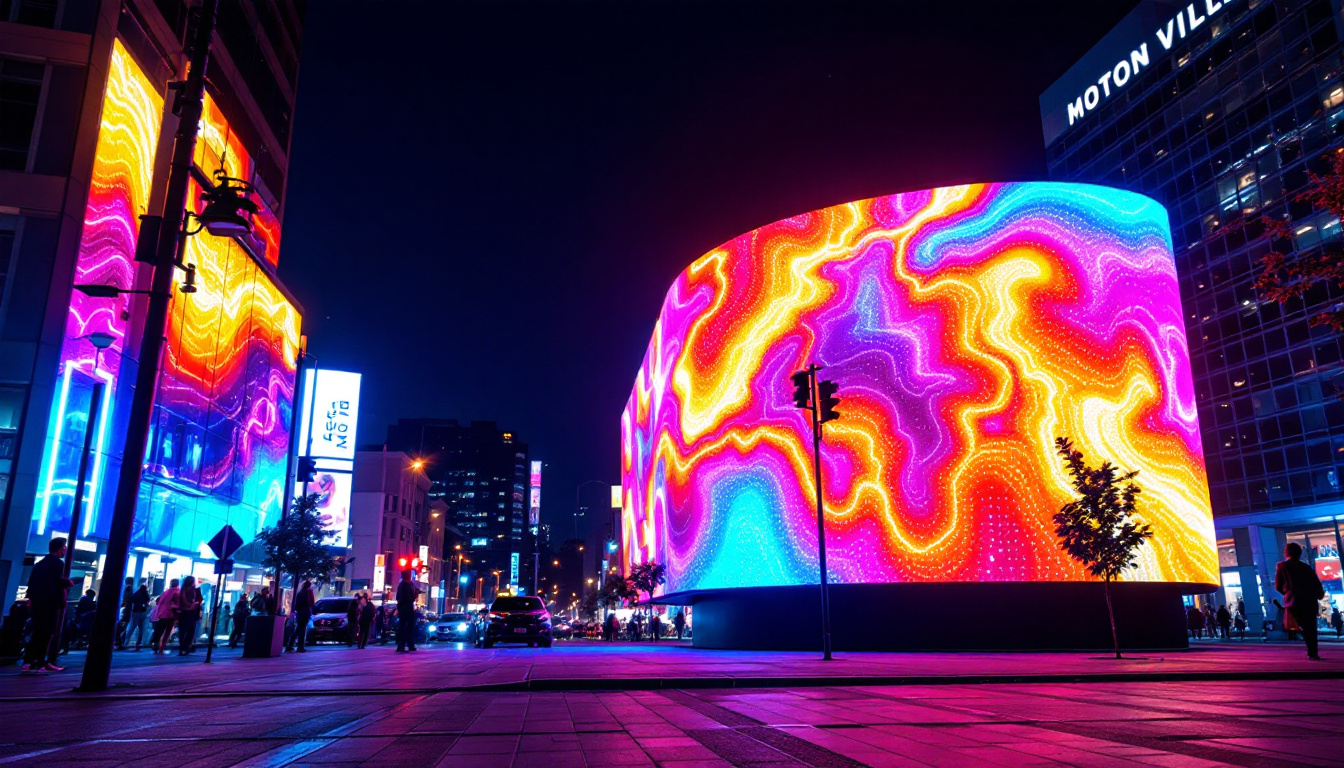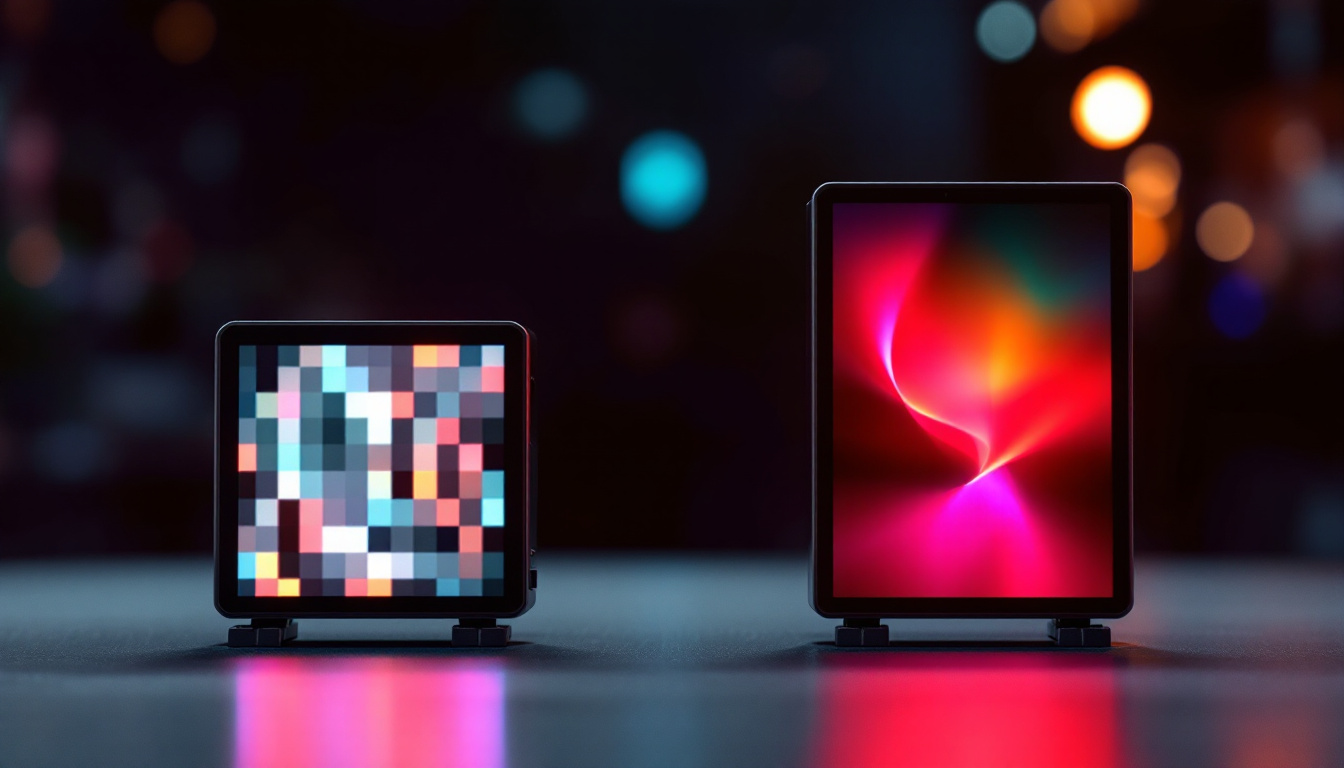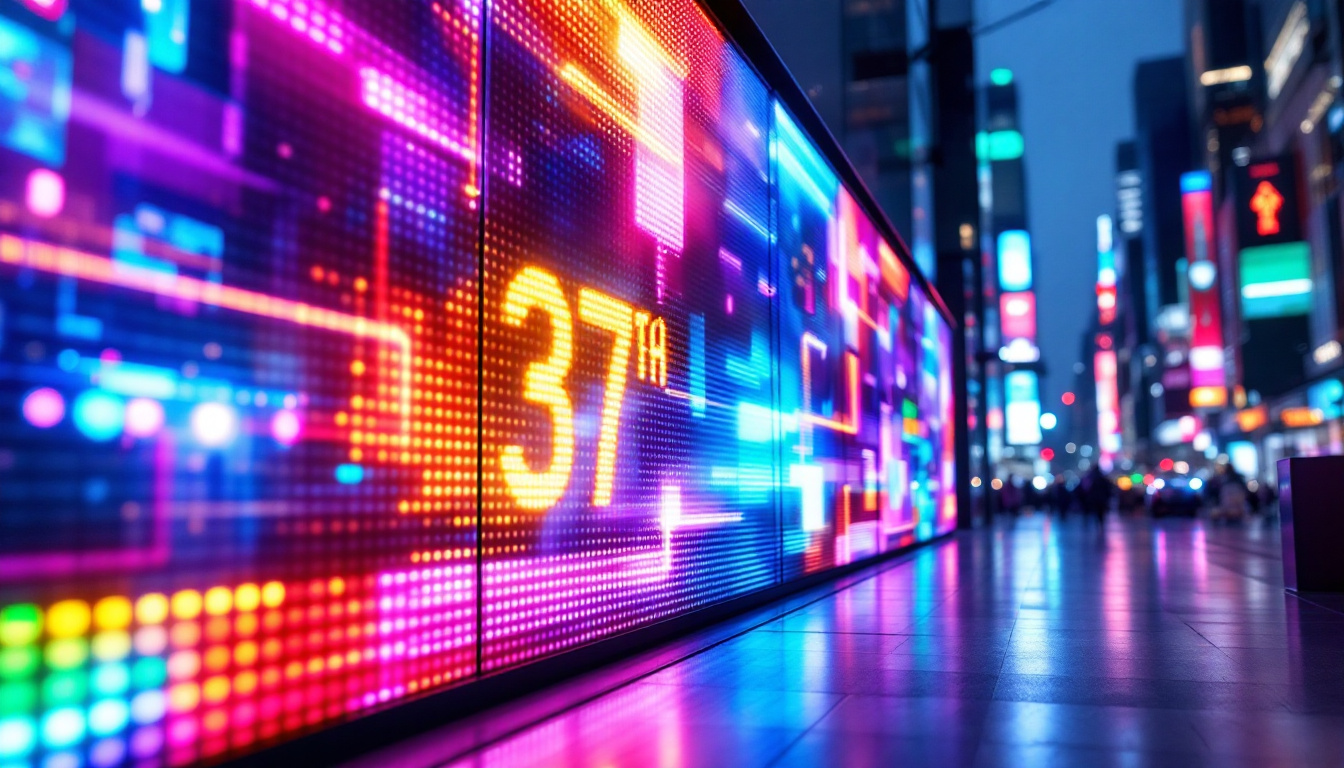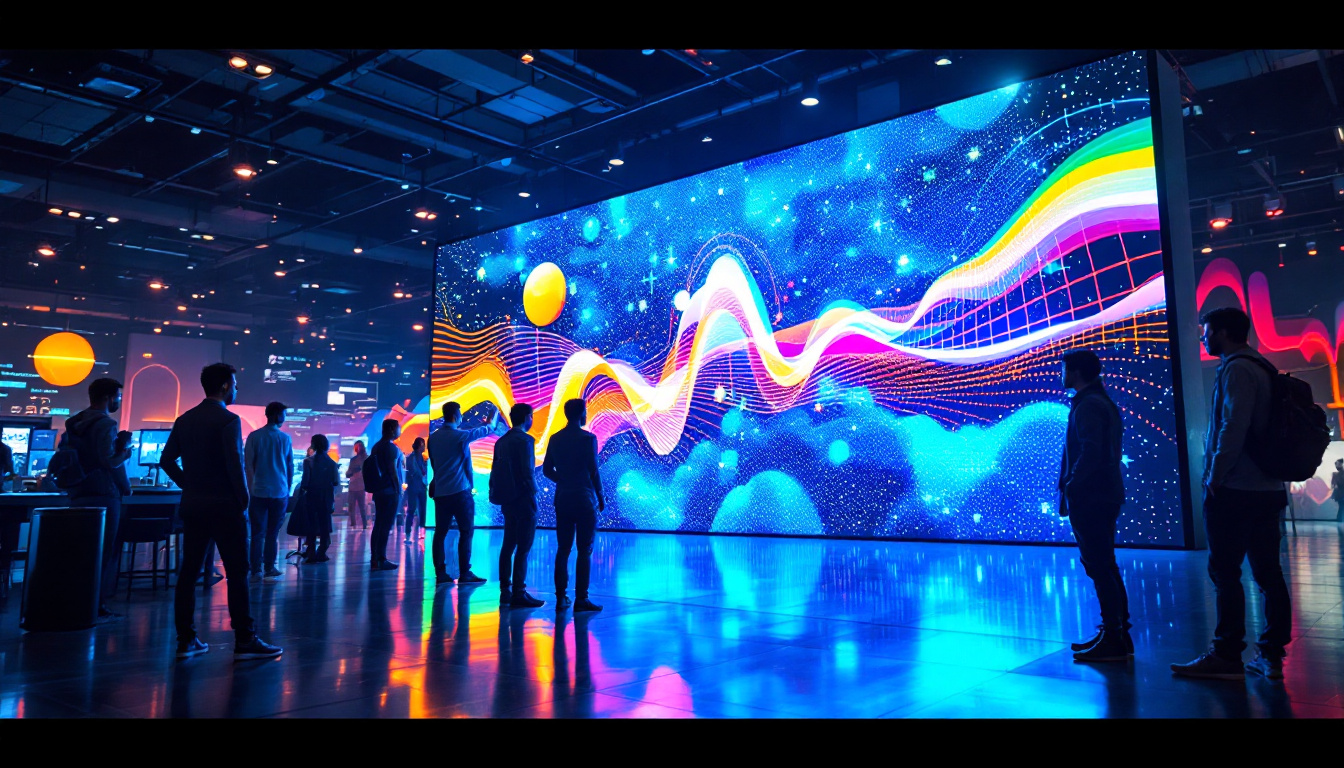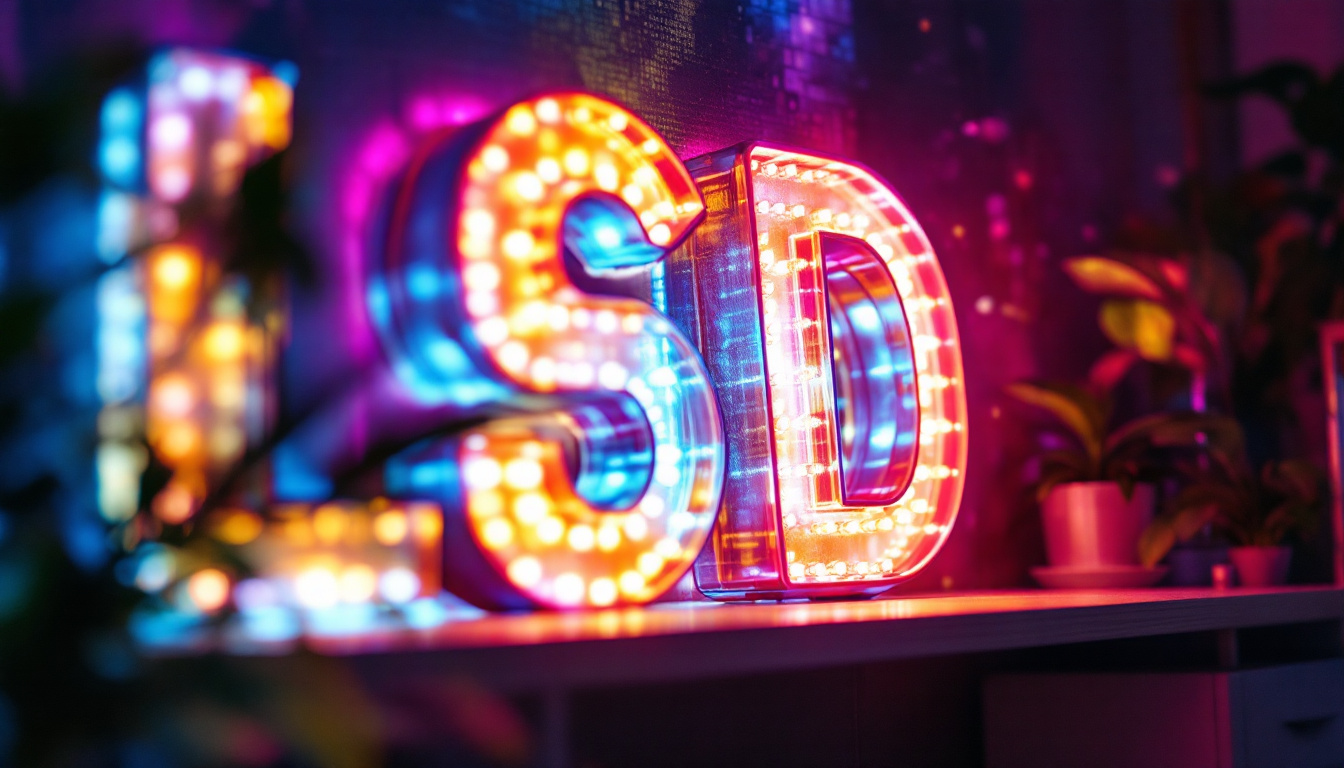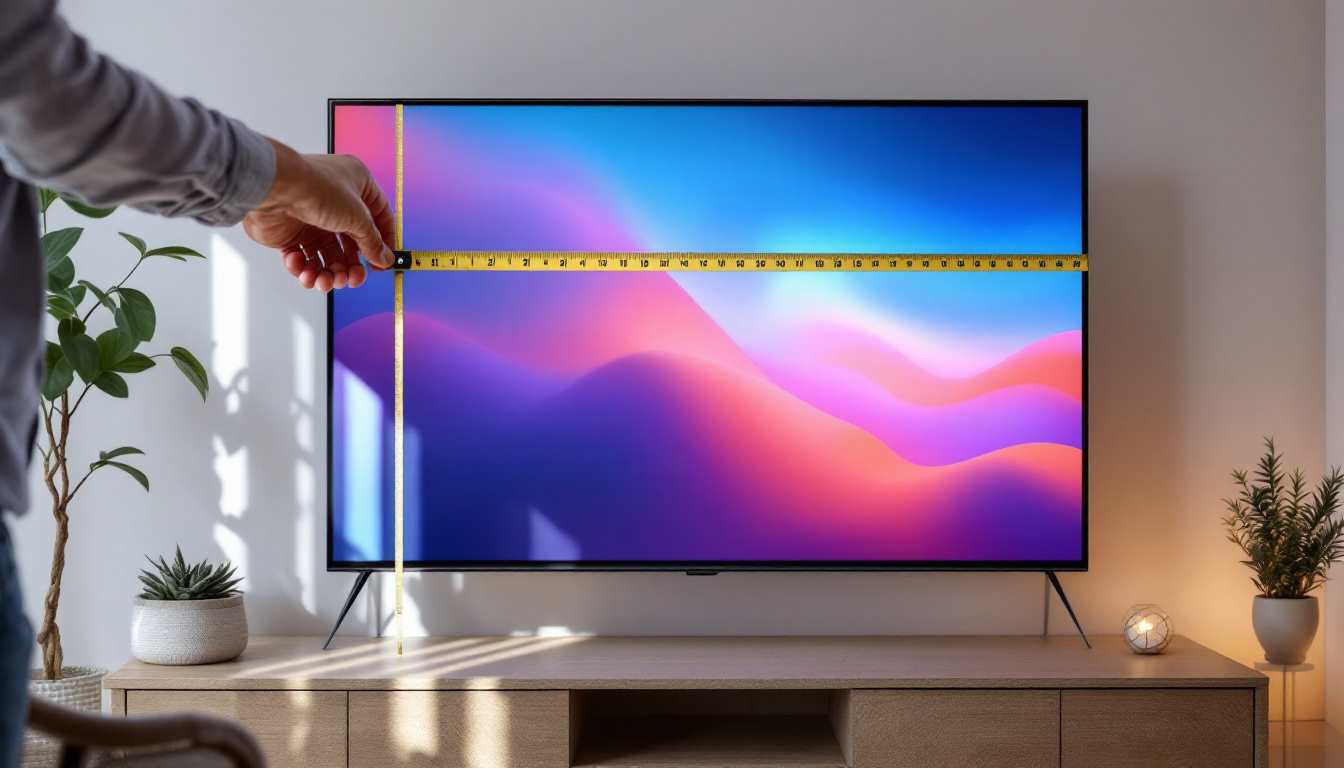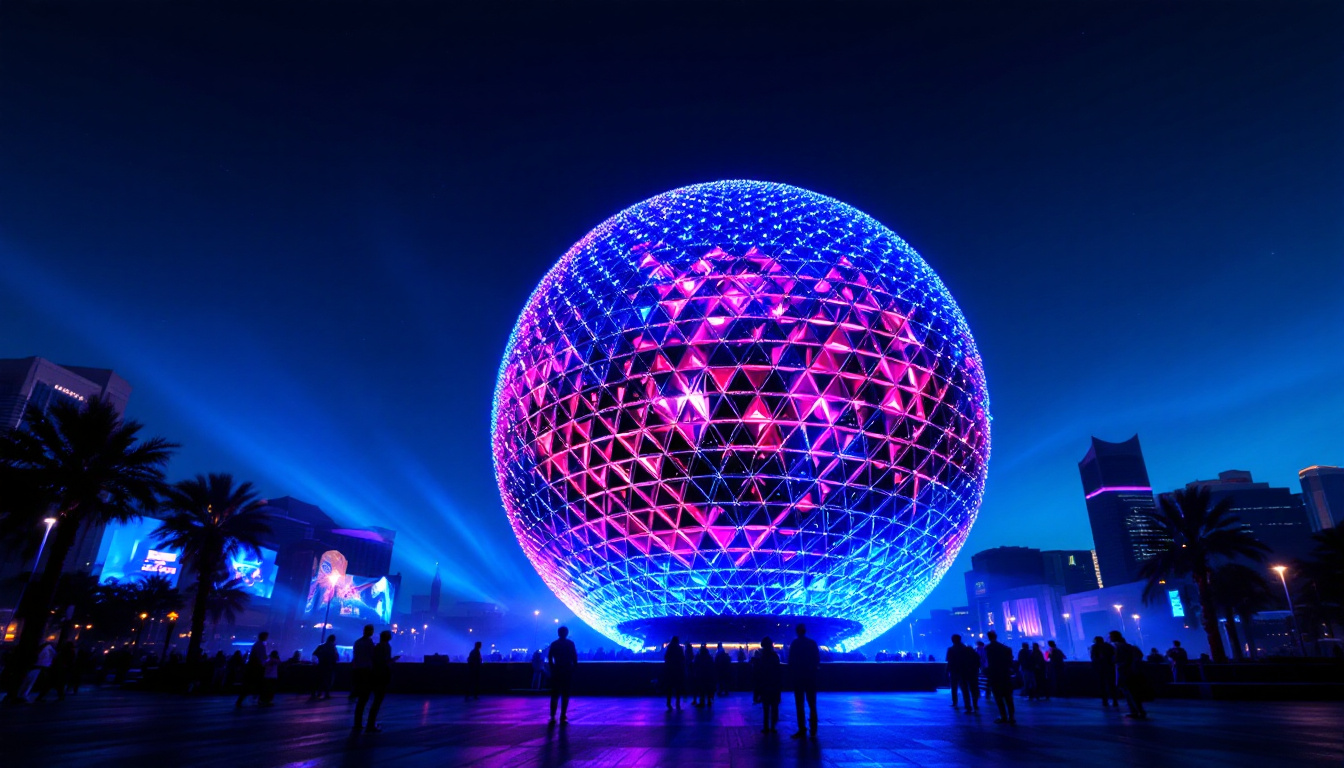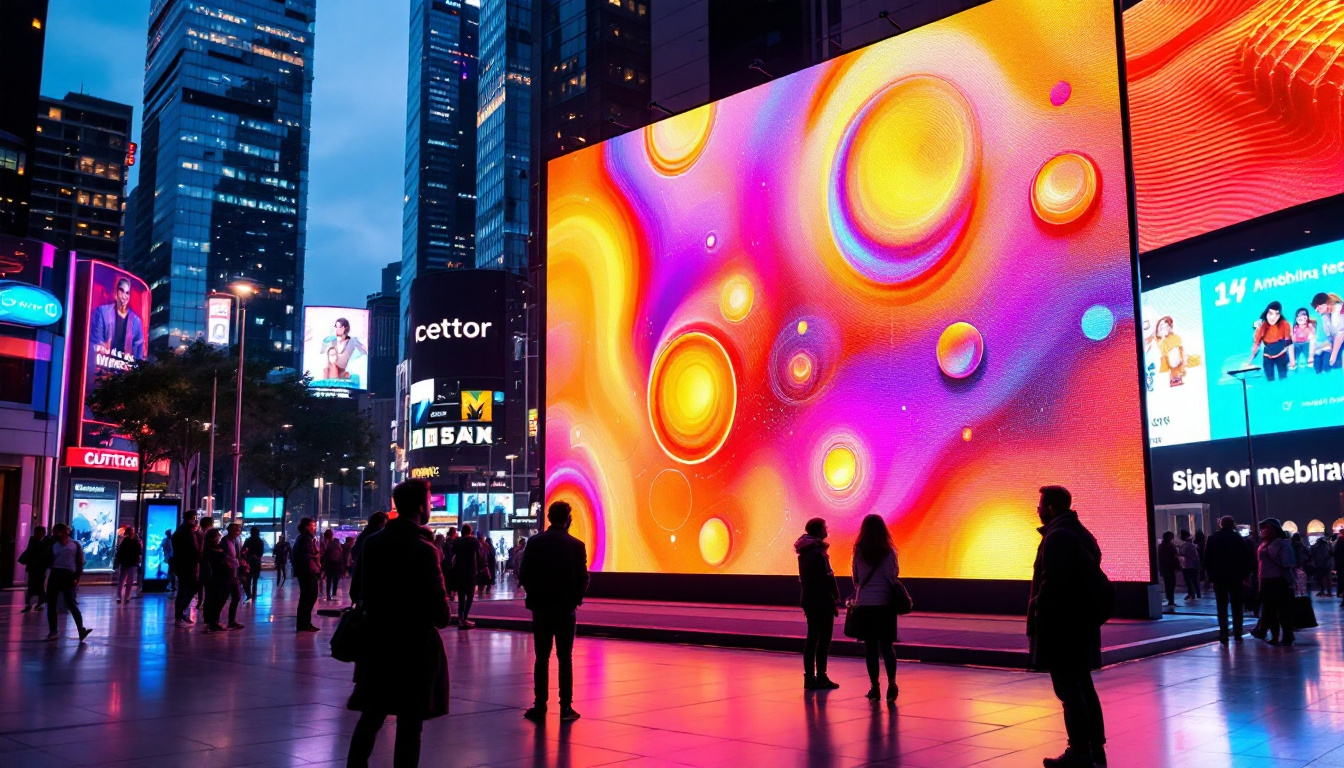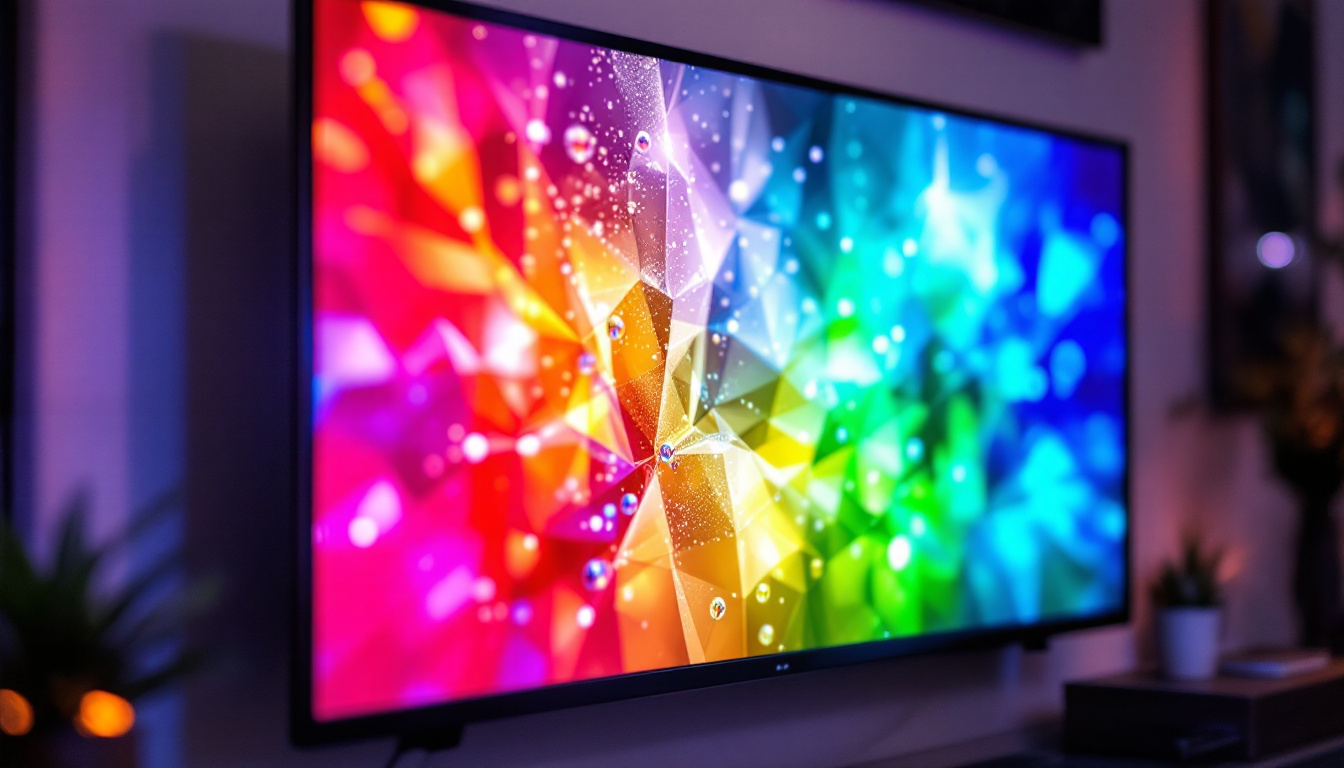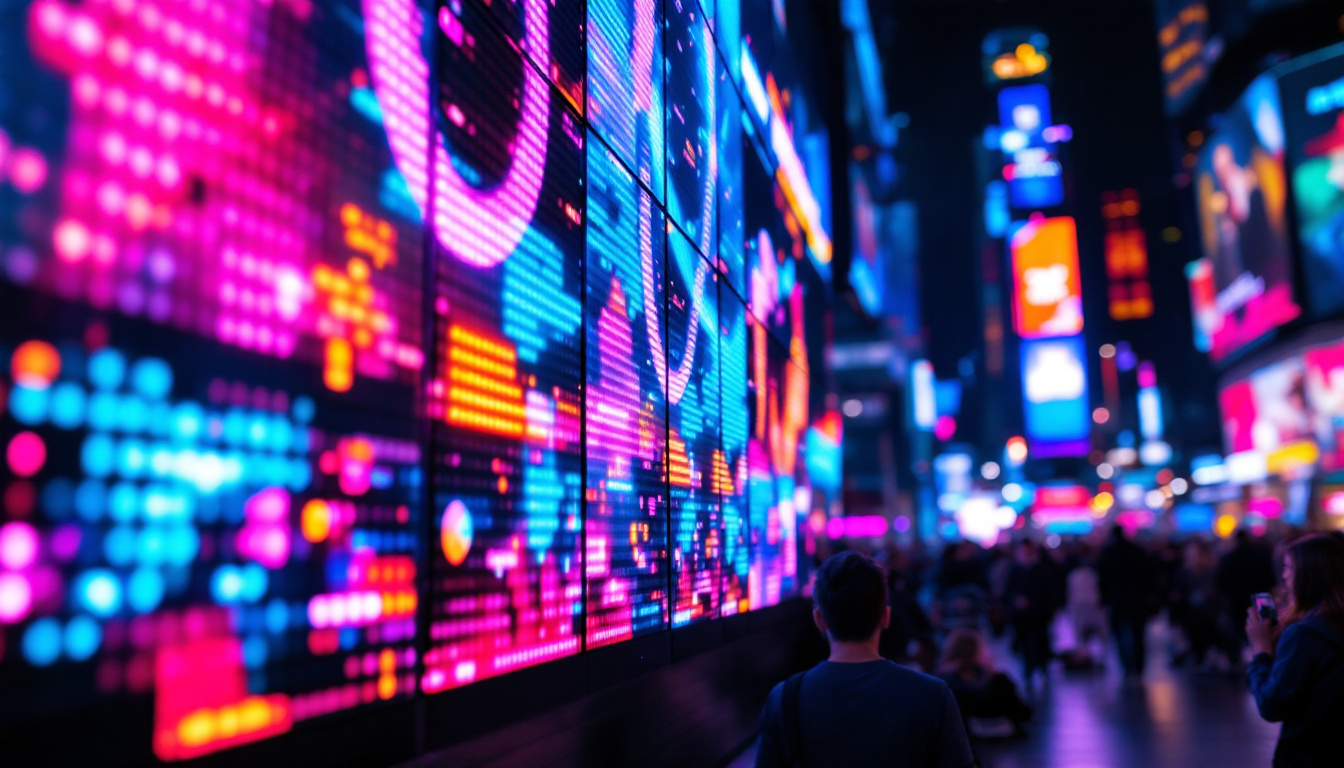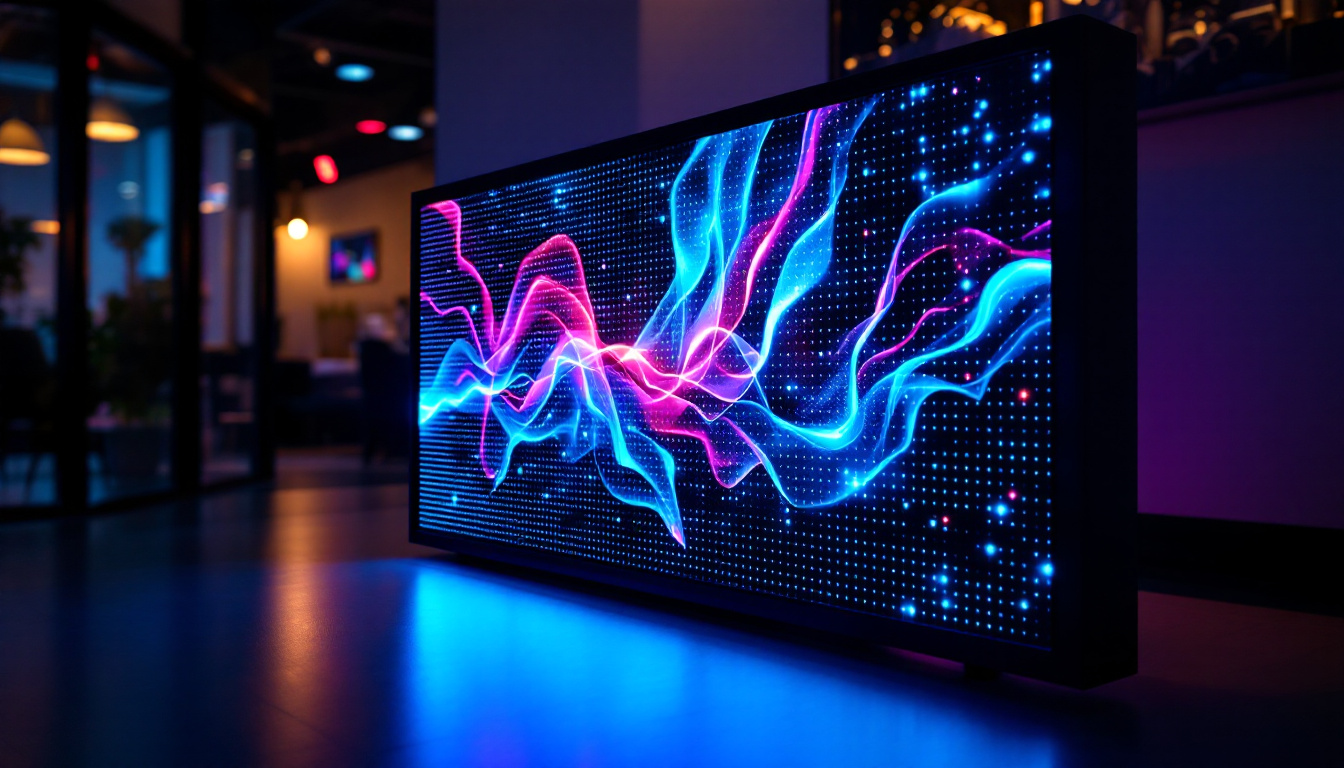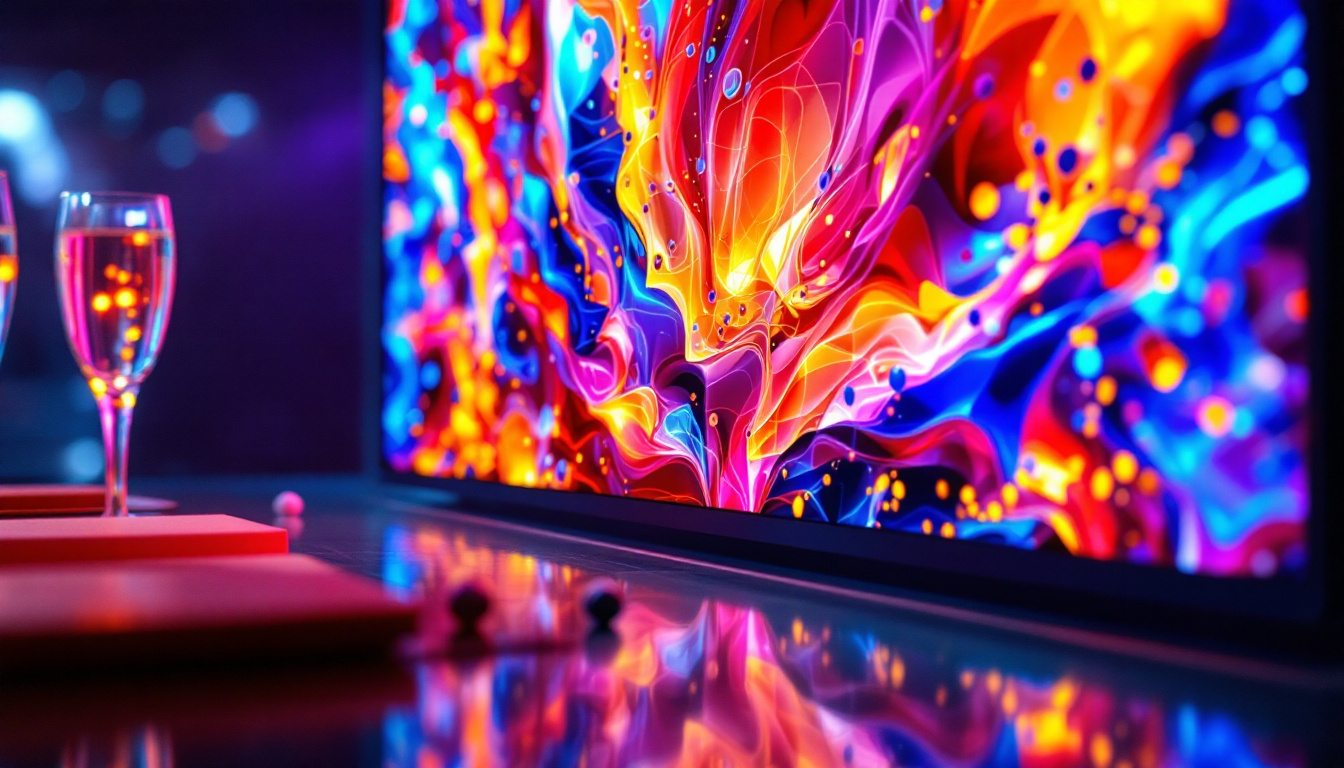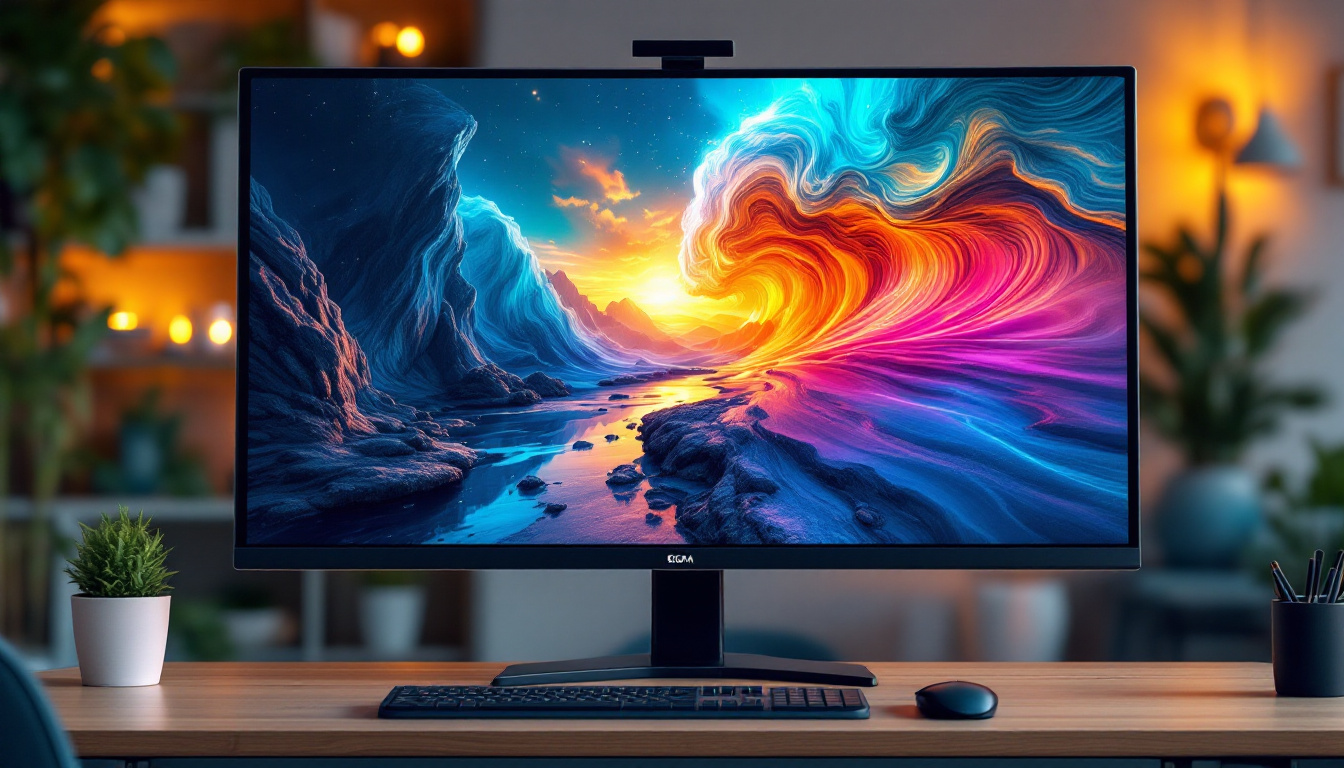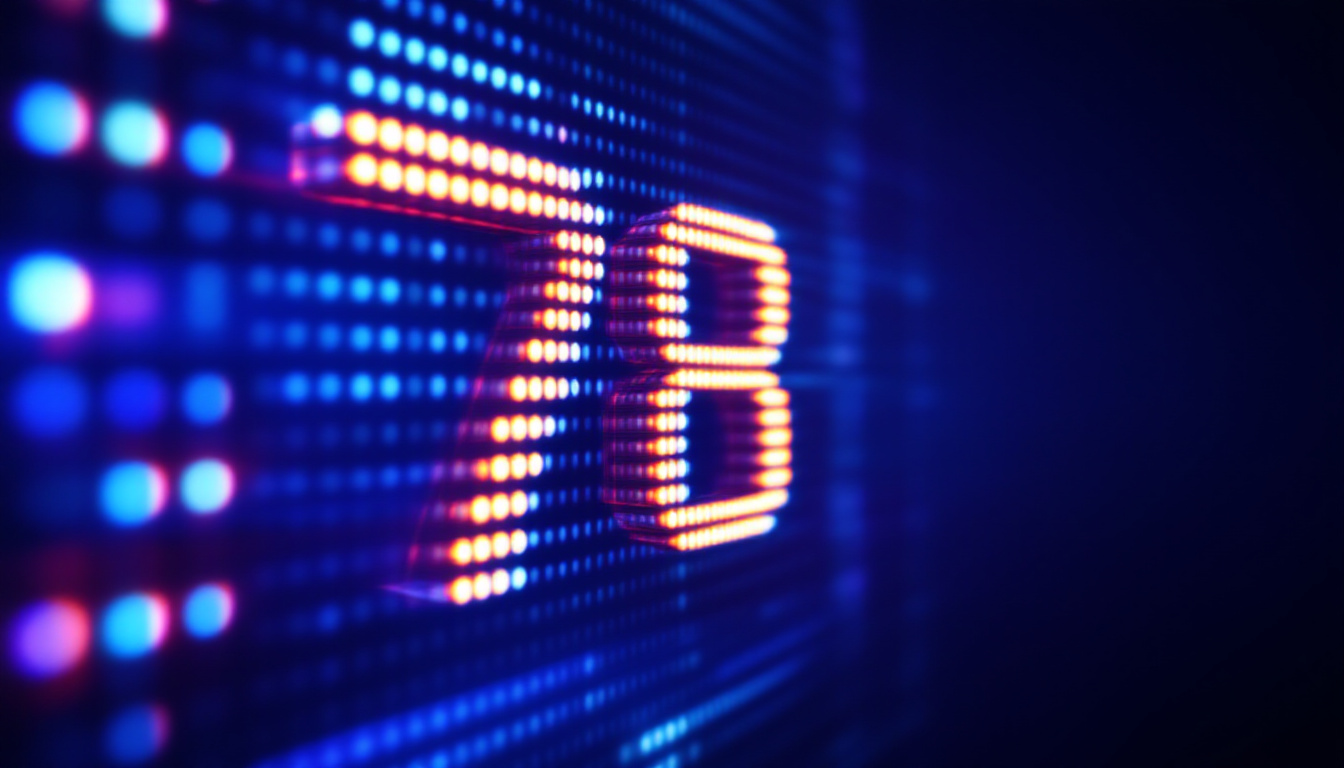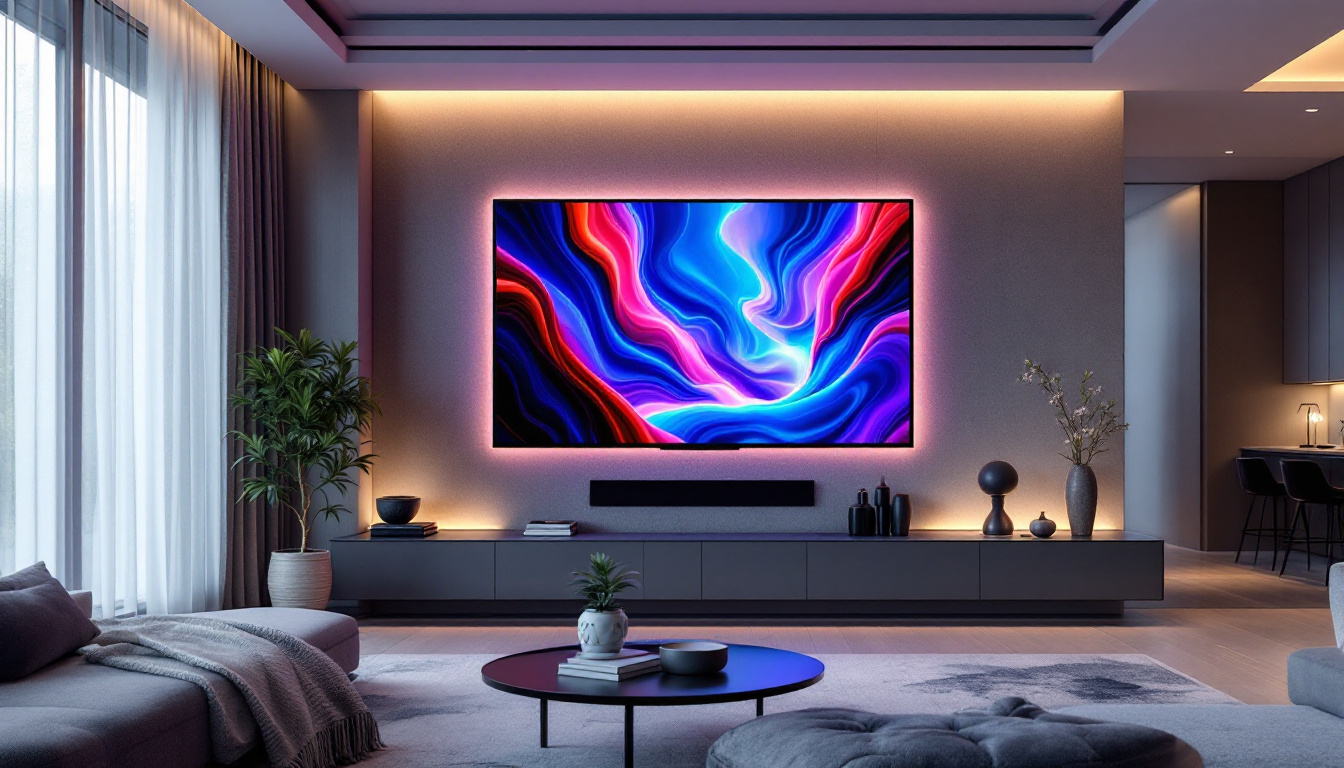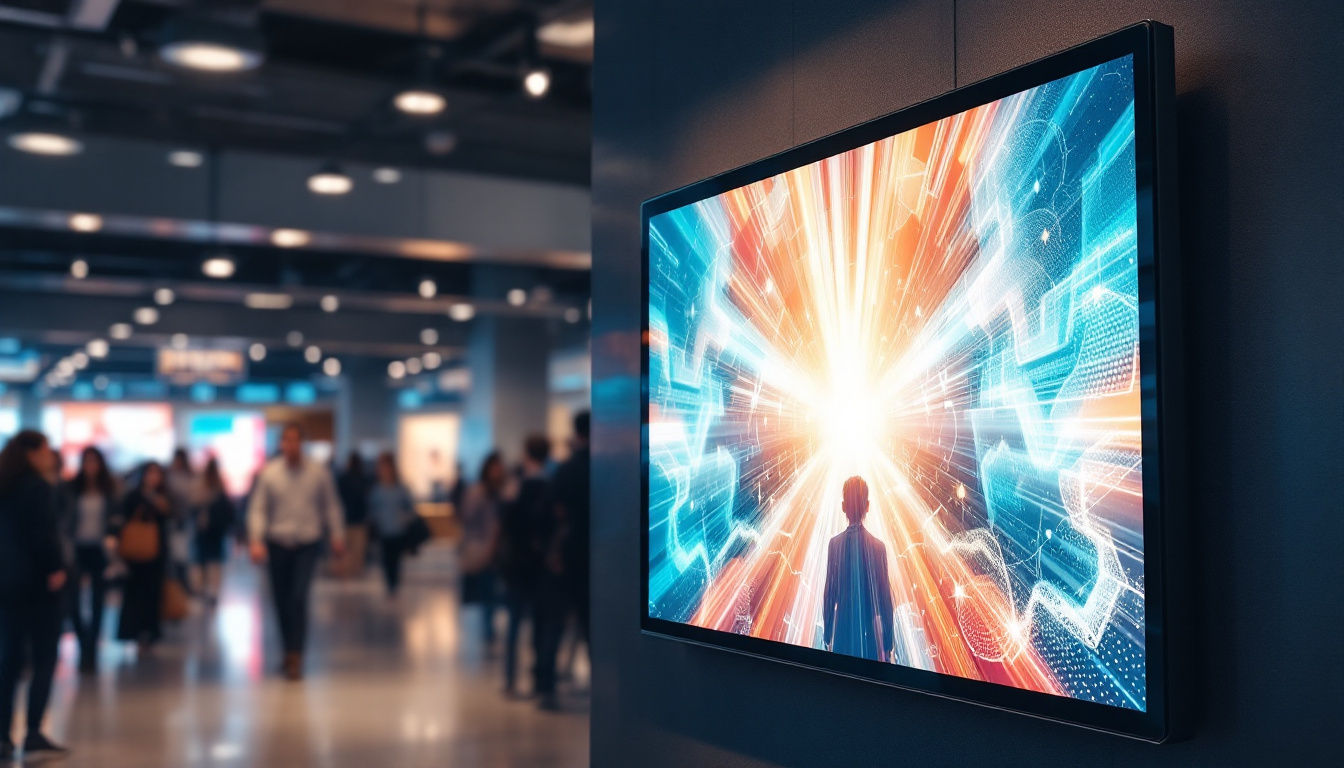In today’s fast-paced digital world, LED displays have become a cornerstone of effective communication and advertising. From large-scale billboards to smaller screens in retail environments, these displays are versatile and impactful. This article delves into the intricacies of LED displays, exploring their technology, applications, and advantages, while also examining the latest trends in the industry.
Understanding LED Technology
LED, or Light Emitting Diode, technology has revolutionized the way visual information is presented. Unlike traditional lighting methods, LEDs are energy-efficient, durable, and capable of producing vibrant colors. The fundamental principle behind an LED is simple: when an electric current passes through a semiconductor material, it emits light.
How LEDs Work
At the heart of LED technology lies the semiconductor. When electrons move through the semiconductor, they release energy in the form of photons, which is visible light. This process is known as electroluminescence. The color of the light emitted depends on the materials used in the semiconductor; for example, gallium nitride produces blue light, while gallium phosphide emits green.
LED displays are composed of numerous individual LEDs arranged in a grid. Each pixel in an LED display typically consists of red, green, and blue (RGB) diodes. By varying the intensity of each color, a wide spectrum of colors can be produced, allowing for stunning visuals and dynamic content. This flexibility is one of the reasons why LEDs have become the preferred choice for everything from large-scale advertising to intricate digital art installations.
Types of LED Displays
LED displays come in various types, each suited for different applications. The most common types include:
- Indoor LED Displays: These are designed for use in controlled environments, such as shopping malls, conference rooms, and theaters. They typically have a higher pixel density, resulting in clearer images and text when viewed up close.
- Outdoor LED Displays: Built to withstand harsh weather conditions, outdoor LED displays are commonly used for billboards, sports arenas, and public transportation stations. They are brighter than indoor displays to ensure visibility in direct sunlight.
- Transparent LED Displays: These innovative displays allow for visibility through the screen while still showcasing content. They are often used in retail environments to create eye-catching advertisements without obstructing the view of products behind the display.
In addition to these common types, there are also specialized LED displays such as flexible LED screens, which can be bent or shaped to fit unique spaces, and high-definition LED displays that offer exceptional clarity and detail for professional broadcasting. Furthermore, advancements in LED technology continue to emerge, such as organic LEDs (OLEDs) that provide even greater contrast and color accuracy, making them ideal for high-end televisions and mobile devices. The rapid evolution of LED technology not only enhances visual experiences but also opens up new possibilities for interactive displays and smart lighting solutions that can adapt to their environment.
Applications of LED Displays
The versatility of LED displays makes them suitable for a wide range of applications. Their ability to deliver high-quality visuals and dynamic content has led to their adoption in various sectors.
Advertising and Marketing
One of the most prominent applications of LED displays is in advertising. Businesses utilize large outdoor LED billboards to capture the attention of passersby with vibrant visuals and animated content. The ability to change advertisements in real-time allows for targeted marketing and increased engagement.
In retail environments, indoor LED displays are often used to showcase promotions, new products, and brand messaging. Their dynamic nature helps to create an engaging shopping experience, encouraging customers to spend more time in-store. Furthermore, the integration of LED technology with social media platforms allows retailers to display user-generated content, fostering a sense of community and encouraging customer interaction.
Events and Entertainment
LED displays play a crucial role in the events and entertainment industry. Concerts, festivals, and sporting events often feature large LED screens to broadcast live performances or provide instant replays. These displays enhance the audience’s experience by ensuring that everyone, regardless of their seating position, can view the action clearly.
Moreover, LED technology is increasingly being used in stage design, where flexible LED panels can be shaped to create stunning visual effects. This innovation allows for a more immersive experience for attendees. In addition to concerts, LED displays are also vital in theatrical productions, where they can serve as dynamic backdrops that change with the narrative, adding depth to storytelling and captivating the audience’s imagination.
Transportation and Public Information
LED displays are also widely used in transportation systems to provide real-time information to passengers. Train stations and airports utilize LED screens to display arrival and departure times, gate information, and other essential updates. Their visibility and clarity ensure that travelers receive timely information, enhancing the overall travel experience.
Additionally, LED displays are employed in traffic management systems to convey important messages, such as speed limits or accident alerts, helping to improve road safety. Beyond this, smart cities are increasingly integrating LED technology into their infrastructure, using these displays to promote public safety announcements, emergency alerts, and even community events, thereby fostering a well-informed and connected populace.
Advantages of LED Displays
The growing popularity of LED displays can be attributed to several key advantages that set them apart from traditional display technologies.
Energy Efficiency
One of the most significant benefits of LED technology is its energy efficiency. LED displays consume considerably less power compared to traditional incandescent or fluorescent displays. This not only reduces operational costs but also contributes to a smaller carbon footprint, making them a more sustainable choice for businesses. Furthermore, the lower energy consumption translates into less heat generation, which can enhance the lifespan of the display and reduce the need for additional cooling systems in enclosed spaces.
Longevity and Durability
LED displays are known for their longevity. With a lifespan of up to 100,000 hours, they outlast many other display technologies. This durability is particularly advantageous in outdoor settings, where displays are exposed to various environmental factors. The robust construction of LED displays ensures they can withstand harsh weather conditions, reducing the need for frequent replacements and maintenance. Additionally, the resilience of LED technology means that they are less susceptible to damage from impacts or vibrations, making them ideal for high-traffic areas or venues that host dynamic events.
High Brightness and Contrast
LED displays offer exceptional brightness and contrast levels, making them suitable for various lighting conditions. Outdoor displays, in particular, are designed to be visible even in direct sunlight, ensuring that content remains clear and engaging. The high contrast ratio also enhances the viewing experience, allowing for sharper images and more vibrant colors. This capability is especially beneficial for advertising and promotional displays, where capturing attention is crucial. Moreover, the ability to adjust brightness levels dynamically allows for optimal viewing experiences at different times of the day, ensuring that the content remains impactful regardless of the surrounding light conditions.
Versatility in Application
Another notable advantage of LED displays is their versatility in application. They can be used in a wide range of environments, from retail stores and sports arenas to concert venues and corporate events. This adaptability allows businesses to leverage LED technology for various purposes, such as advertising, information dissemination, or enhancing the overall ambiance of a space. Furthermore, advancements in LED technology have led to the development of flexible and curved displays, which open up new possibilities for creative installations and innovative designs that can fit into unique architectural spaces.
Environmental Impact
In addition to their energy efficiency, LED displays also have a positive environmental impact due to their recyclable components. Unlike traditional display technologies that may contain hazardous materials, many LED displays are designed with sustainability in mind, using materials that can be repurposed at the end of their life cycle. This not only minimizes waste but also aligns with the growing consumer demand for eco-friendly products. As more companies prioritize sustainability in their operations, the adoption of LED displays serves as a proactive step towards reducing environmental impact while enhancing brand image.
Challenges and Considerations
Despite their numerous advantages, LED displays are not without challenges. Understanding these challenges is crucial for businesses considering their implementation.
Initial Cost
The initial investment for LED displays can be significant, especially for large-scale installations. While the long-term savings in energy costs and maintenance may offset this initial expense, businesses must carefully evaluate their budget and expected return on investment (ROI).
Heat Management
LED displays generate heat during operation, which can affect their performance and longevity if not managed properly. Adequate cooling systems must be in place to ensure that the displays operate within optimal temperature ranges. This consideration is particularly important for outdoor displays exposed to high temperatures.
The Future of LED Displays
The future of LED displays looks promising, with ongoing advancements in technology and design. As industries continue to seek innovative ways to engage audiences, LED displays are likely to evolve further.
Advancements in Resolution
One of the most exciting trends in LED technology is the development of higher resolution displays. As pixel density increases, the quality of images and videos improves significantly. This trend is particularly important for applications where close viewing is common, such as retail and events.
Integration with Smart Technology
Another key trend is the integration of LED displays with smart technology. The rise of the Internet of Things (IoT) has opened up new possibilities for interactive displays that can respond to user input or environmental changes. For example, smart LED displays can adjust brightness based on ambient light levels or display personalized content based on viewer demographics.
Sustainability Initiatives
As businesses become more environmentally conscious, the demand for sustainable display solutions is on the rise. Manufacturers are exploring eco-friendly materials and production processes to minimize their environmental impact. This shift towards sustainability is likely to shape the future of LED displays, making them an even more attractive option for businesses.
Conclusion
LED displays have transformed the way information is communicated and experienced across various sectors. Their energy efficiency, durability, and vibrant visuals make them a preferred choice for advertising, events, and public information systems. As technology continues to advance, the future of LED displays promises even more exciting developments that will further enhance their capabilities.
For businesses looking to invest in display technology, understanding the intricacies of LED displays is essential. By leveraging the advantages of this technology while being mindful of its challenges, organizations can create impactful visual experiences that resonate with their audiences. As the digital landscape evolves, LED displays will undoubtedly remain at the forefront of innovation in visual communication.
Discover LumenMatrix’s Innovative LED Solutions
Ready to elevate your visual communication strategy with cutting-edge LED technology? Explore LumenMatrix’s comprehensive range of LED display solutions, from vibrant Indoor and Outdoor LED Wall Displays to dynamic Vehicle and Sports LED Displays. Whether you’re looking to captivate shoppers with an LED Poster Display, engage fans with a Floor LED Display, or make a bold statement with a Custom LED Display, LumenMatrix has the tools to bring your vision to life. Embrace the future of digital signage with our All-in-One and Transparent LED Displays, designed to deliver unparalleled engagement and clarity. Check out LumenMatrix LED Display Solutions today and transform the way you connect with your audience.

